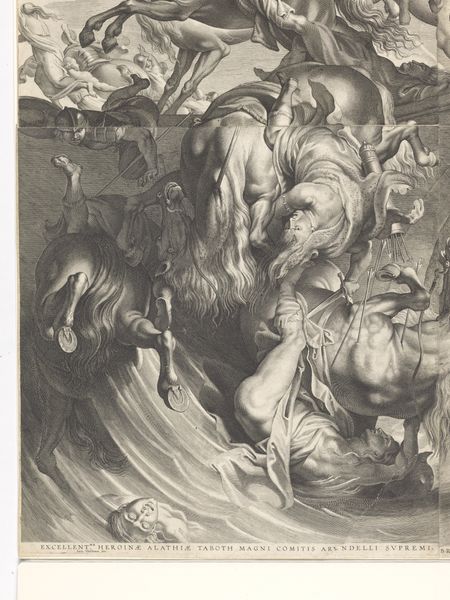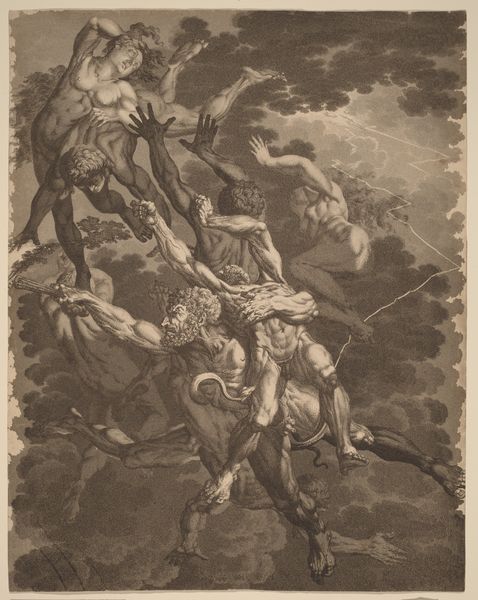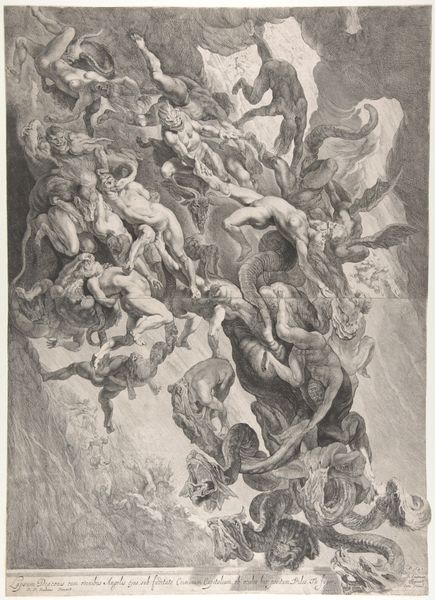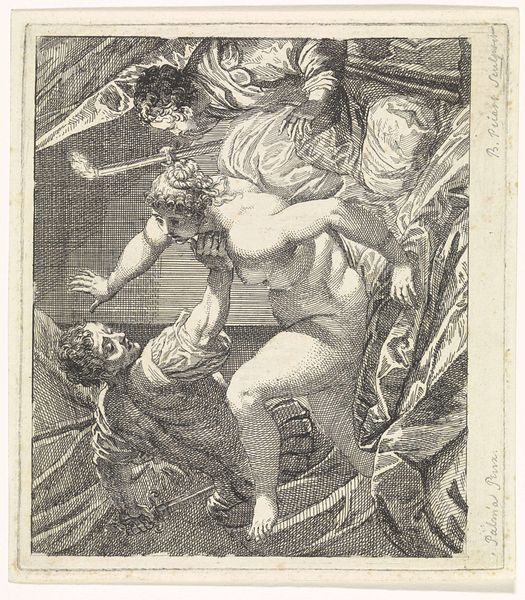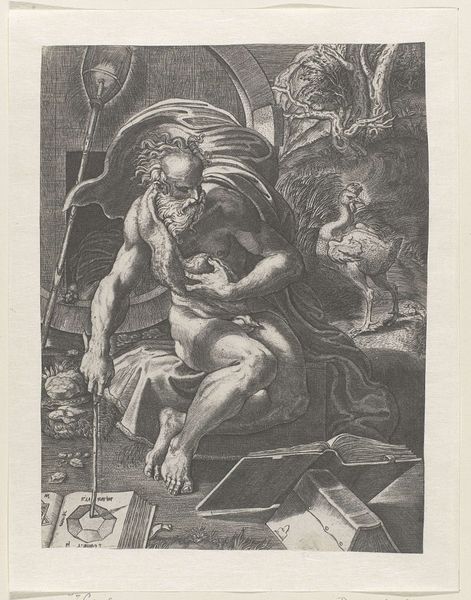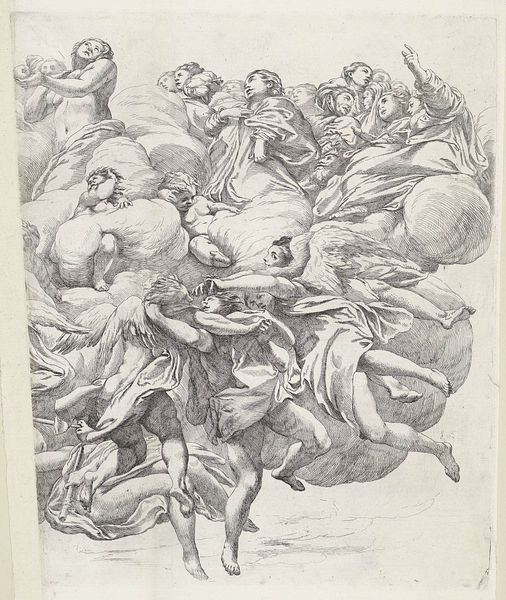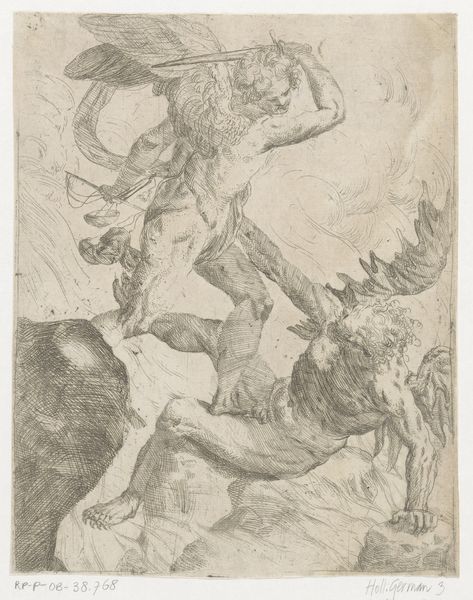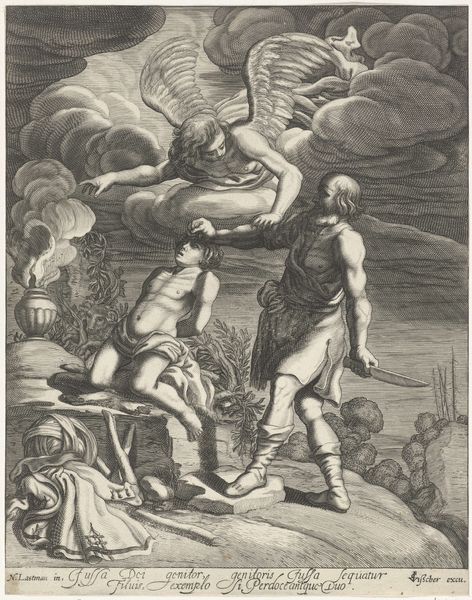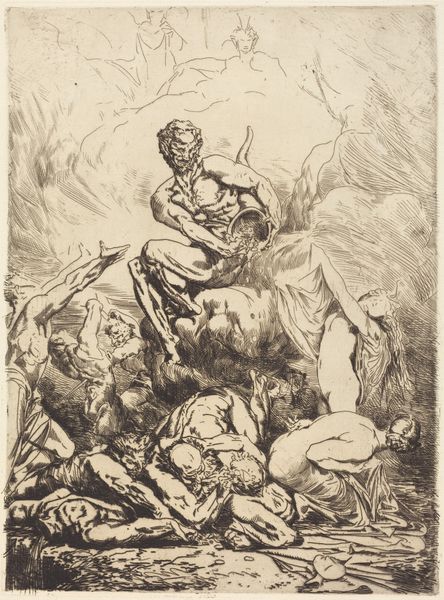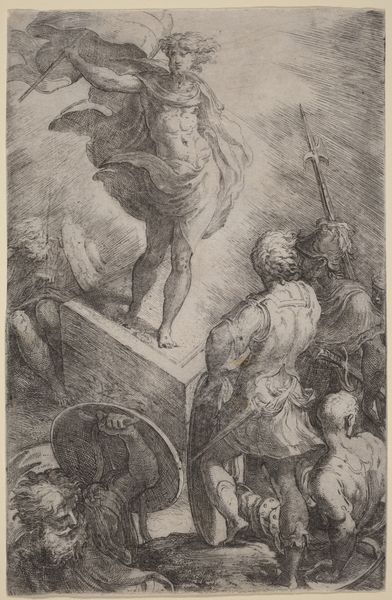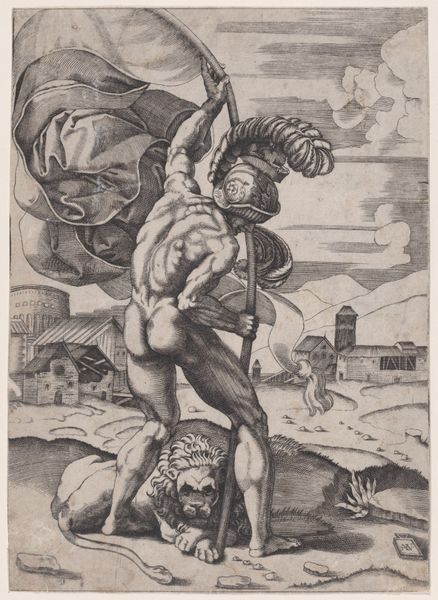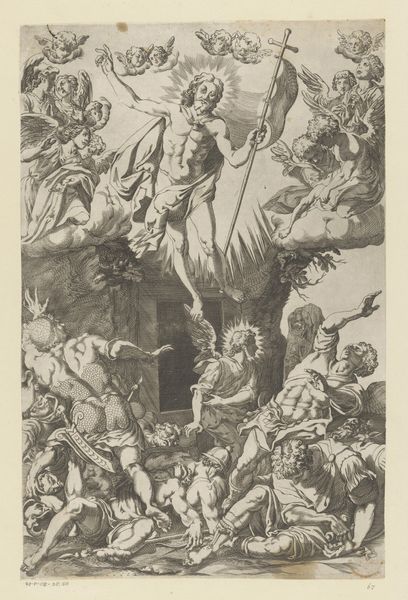
print, etching
#
narrative-art
#
baroque
# print
#
etching
#
figuration
#
history-painting
Dimensions: height 174 mm, width 126 mm
Copyright: Rijks Museum: Open Domain
Curator: This etching, dating from 1590 to 1632, is titled *Opstanding van Christus*, or *Resurrection of Christ*. Pieter de Jode I is credited with its creation. It’s currently held at the Rijksmuseum. What's your first reaction to it? Editor: Chaos. The composition, the frantic gestures of the figures...it conveys a sense of utter disarray. Are they soldiers being thrown back from the tomb? Curator: Indeed. De Jode uses the etching technique masterfully to capture that sense of upheaval. Think about the process – the laborious scratching into the metal plate, the inking, the printing – to create such a dynamic image of this significant biblical event. Editor: It's interesting to consider the accessibility of printmaking at this time. How would an image like this have circulated? And to whom? Did prints like this become part of the broader political and religious landscape, shaping public perceptions of the Church's authority? Curator: Absolutely. Consider that the production of such prints, although seemingly less ‘unique’ than paintings, still relied on skilled craftsmanship. Each line had to be carefully etched, controlled by the artist. This engraving served both religious instruction and demonstrated artistic labor. And this piece definitely shows clear Baroque stylistic conventions, figuration with narrative elements. Editor: And were the viewers actively engaged in a way similar to theatre? Because there is such heightened emotional drama expressed in each character it draws you into its own constructed social situation. And where were these distributed or seen by most? The scale suggests personal devotion more than public spectacle. Curator: Very perceptive. These were often made to commission, or to fulfil particular devotional markets; their appearance being determined as much by economics as artistic expression. Considering also the availability of similar artistic prints helped develop taste across the society. Editor: Thinking about the modern perspective on labor that went into making this piece as an object for private devotion offers us insight into both economics of religious dissemination in this period and provides the tools to approach works by De Jode’s contemporaries. Curator: Precisely, analyzing art from the materials to their circulation highlights its wider public life and its potential impacts.
Comments
No comments
Be the first to comment and join the conversation on the ultimate creative platform.
